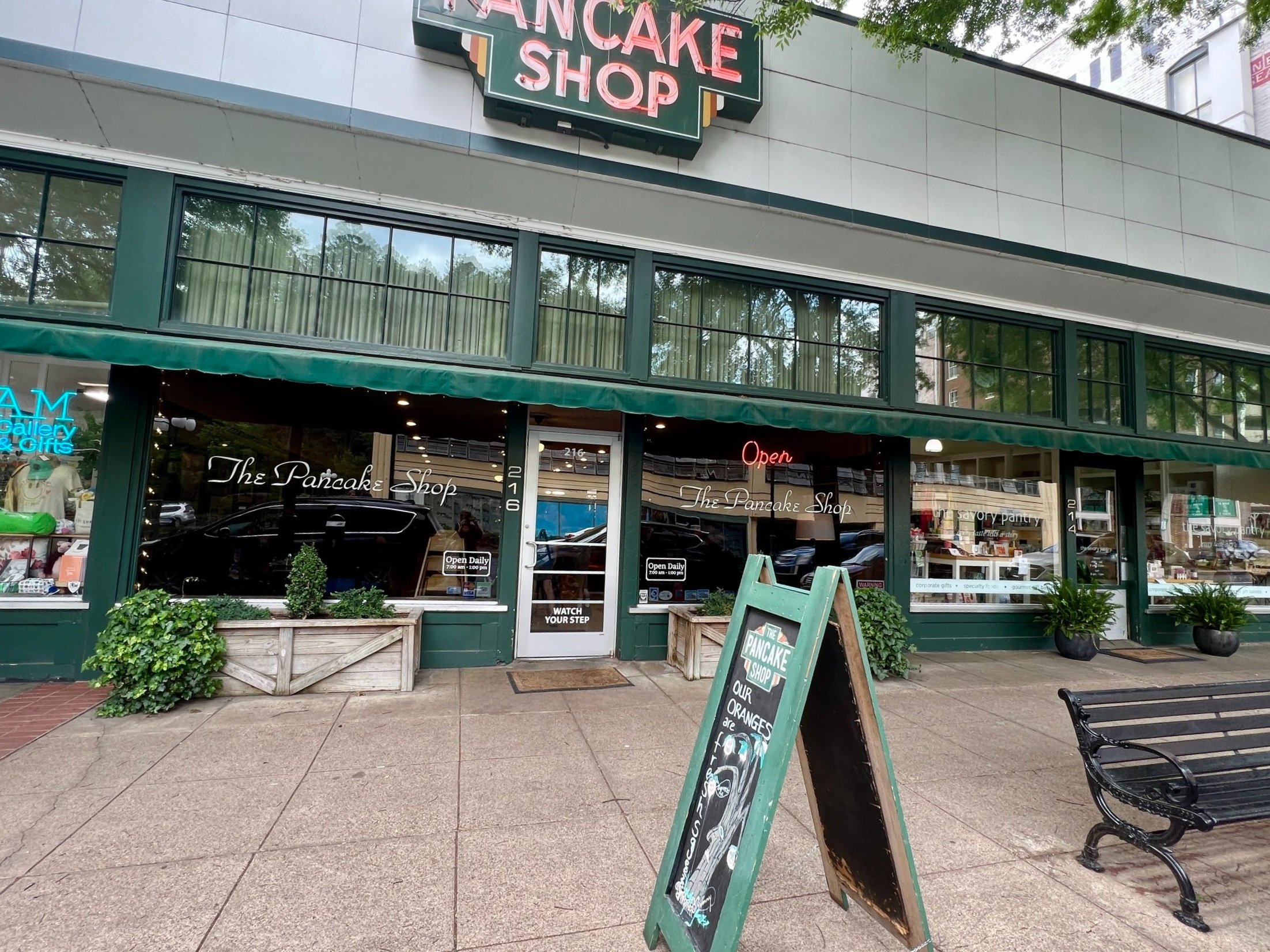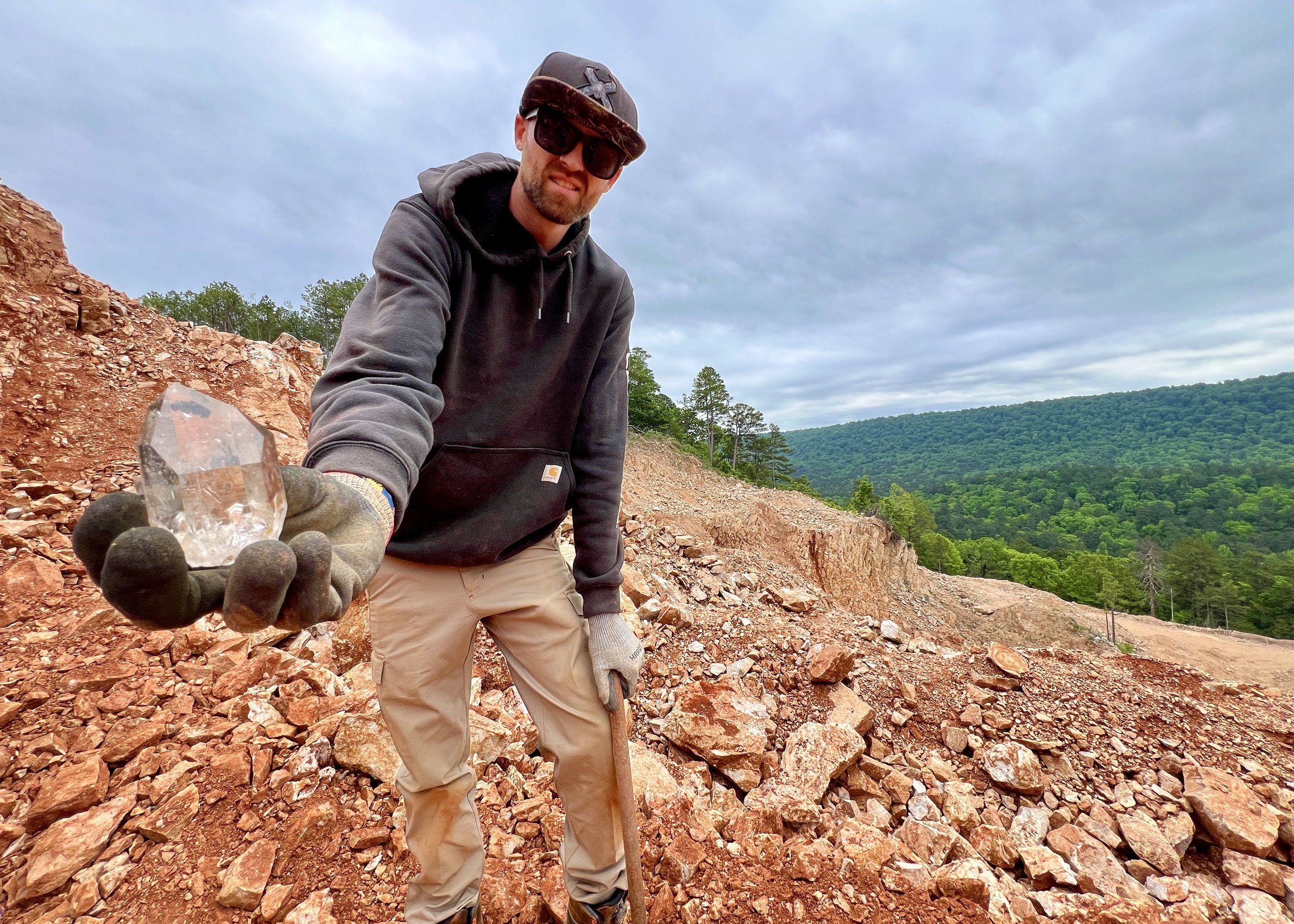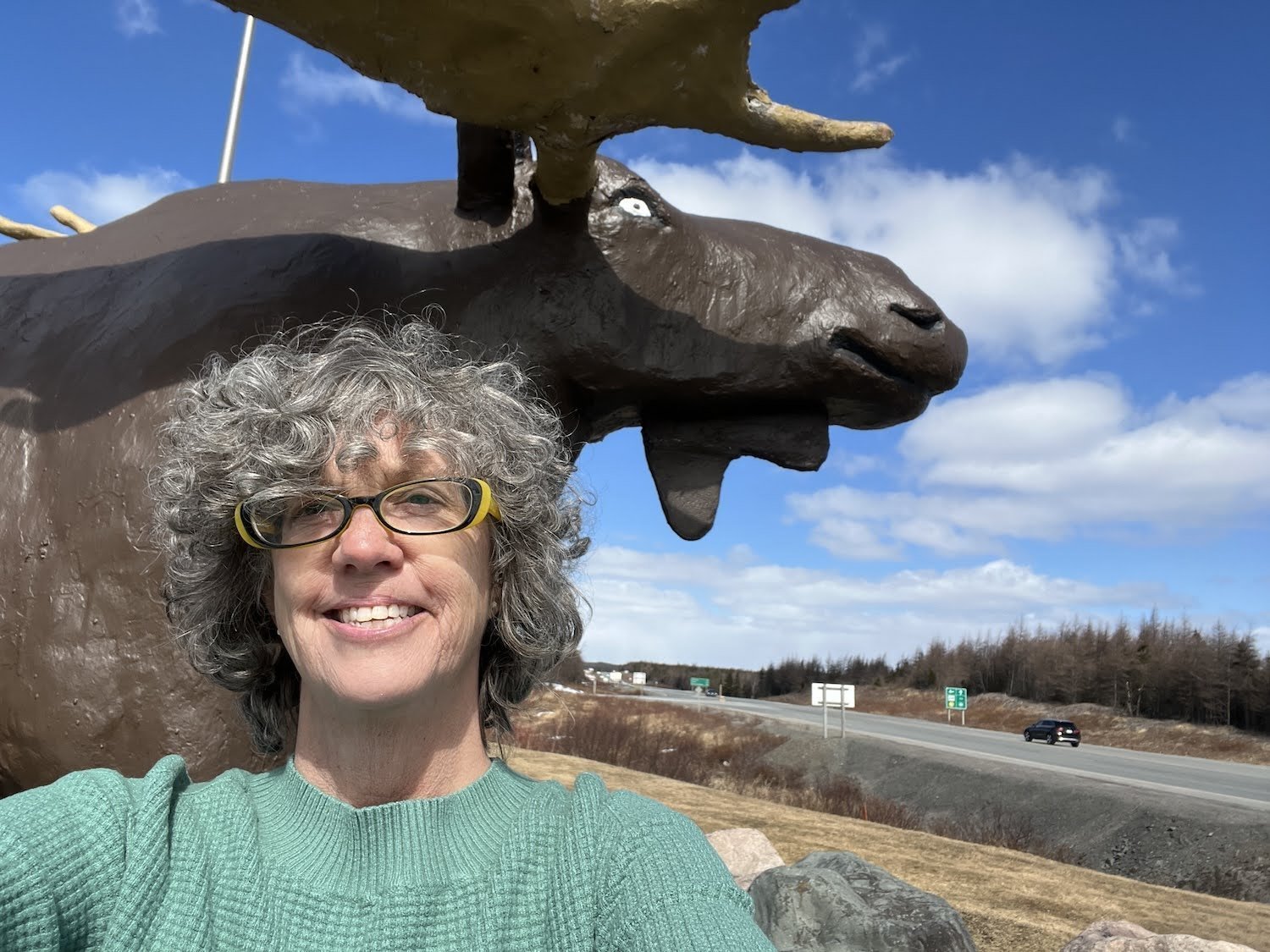Three Nights in Hot Springs, Arkansas, America’s First Spa City
Published May 12th, 2024
Words and photography by Jennifer Bain unless otherwise noted.
Photo credit VIsit Hot Springs
When classical tuba player Rose Schweikhart moved from Illinois to Hot Springs, Arkansas for an ill-fated romance and realized nobody was making craft beer with the federally protected thermal spring water, the avid home brewer reached out to the National Park Service.
“Someone’s got to make beer with this famous spring water that you can drink,” she figured, and the superintendent of Hot Springs National Park quickly agreed.
Schweikhart landed a long-term lease in one of the empty but tenant-ready historic bathhouses along “Bathhouse Row” and created Superior Bathhouse Brewery. She serves the world’s only beer made with thermal spring water at America’s only brewery in a national park.
“Being in this building is really special,” Schweikhart says, gesturing around the vintage brick structure built in 1916 that operated as a bathhouse until 1983. “I feel kind of honoured to have this opportunity.”




As we sample Superior’s beer (and root beer) and munch on smashburgers, Schweikhart delves into the story of how the park protects 47 springs and pumps the tested water into buildings like hers on Bathhouse Row.
After all, beer is 95 percent water and this water is heated geologically not volcanically and so doesn’t smell or taste like sulfur.


Hot Springs is an under-the-radar city of about 38,000 in Central Arkansas, about an hour’s drive from Bill and Hillary Clinton National Airport in Little Rock. At 5,500 acres, Hot Springs National Park is one of the smallest national parks in the United States.
Established in 1832 as Hot Springs Reservation and then turned into a national park in 1921, the unusual park is partly urban. In downtown Hot Springs, one side of Central Avenue is on city property while the side where eight buildings make up Bathhouse Row is federal property. The rest of the irregularly shaped park has the usual things — forests, hiking trails, an observation tower and a campground.
Architecture buffs can marvel at eight opulent buildings constructed between 1892 and 1923 during the golden age of “medical bathing.”
You can have a classic bathhouse experience in the Buckstaff Bathhouse and a modern spa session at Quapaw Baths & Spa in the Quapaw Bathhouse. The park visitor center/museum is run from the Fordyce Bathhouse, and its Bathhouse Row Emporium gift shop out of the Lamar Bathhouse. The Ozark Bathhouse houses the Hot Springs Natural Park Cultural Center, the Hale Bathhouse is home to Hotel Hale, and the long vacant Maurice Bathhouse will soon be available for commercial leasing.
Nobody is sure how the Quapaw once interacted with the hot springs here in the Ouachita Mountains over 10,000 years as the area’s first inhabitants, but they do know that settlers were drawn to the healing waters in the 1800s and early 1900s before hot running water existed in most homes.
At first, people bathed in the open at uncapped springs. Then they built makeshift tents, wooden structures and finally fancy, competing bathhouses. People — mostly men — came and usually got doctor’s prescriptions for a course of 21 baths spread out over three weeks.
They would change, soak in private tubs for 20 minutes while being scrubbed with bath mitts, move on to sitz tubs to bathe their nether regions, sit in vapor cabinets that helped with lung and sinus conditions, stretch out in a “pack room” covered in hot and cold towels, have a cool water needle shower and then perhaps a massage.
Then it would be off to a stateroom to relax and dress with the help of a maid or valet, or up to the rooftop garden (where men and women had separate “courts”), the gymnasium and an assembly room where everyone could socialize.
I enjoy some of this (the bath through the massage) at the Buckstaff during a 90-minute but camera-free session. Then I do a deeper dive into the medical bathing era at the park’s visitor center and museum.
“It’s a pretty wild geologic phenomenon that occurs here,” ranger Kendra Barat says on one of the daily guided tours.
Today’s thermal water fell as rain nearly 4,500 years ago and collected in a watershed known as the “recharge area.” It seeped down through the layers of novaculite, sandstone and shale, and was heated by a naturally occurring geothermal gradient. Deep below the earth’s surface, a narrow fault helped the hot water to shoot back toward the surface, where it emerges as thermal springs.
The National Park Service monitors and tests the water, and oversees an underground network of pipes that transfers the precious liquid to the bathhouses and to some free public fountains.


My tour with Barat ends with a cup of the surprisingly neutral tasting water at one of the fountains, and then a stroll along the Grand Promenade — a kilometre-long scenic brick path above Bathhouse Row.
I don’t have time to hike, but do walk from the Hot Springs Mountain Tower back down to Bathhouse Row, passing what was once a hospital for army and navy veterans who were nursed back to health with the soothing thermal waters.
It’s April when I visit Hot Springs, and Arkansas is starting to bloom.




My base is a luxurious, modern treehouse at In The Trees on Blowout Mountain Road. Sarah and Lee Medley, parents of six, are slowly building the secluded sanctuary next to the Northwood Mountain bike trail, making sure the cabins and treehouses are well spaced and each have a deck, hot tub and outdoor fireplace.
There’s a different kind of treehouse at Garvan Woodland Gardens, a 210-acre botanical garden started by the late industrialist and philanthropist Verna Cook Garvan and now in the care of the University of Arkansas.
The playful wood structure — the Bob and Sunny Evans Tree House in the Evans Children’s Adventure Garden — was created by Modus Studio to help bring children back into the woods.


Adults, meanwhile, gravitate to the six-storey Anthony Chapel with its floor-to-ceiling glass walls, multiple skylights and yellow pine structure. It was designed by Maurice Jennings and David McKee, alumni of the University of Arkansas’s Fay Jones School of Architecture. Jennings relied on his 25 years of experience working with nationally renowned design partner Fay Jones to create the chapel that rivals the team’s most famous creation – Thorncrown Chapel, which I happened to have visited while in Eureka Springs, Arkansas a few years ago.





For a break from the great outdoors, I head to the Gangster Museum of America across from the Buckstaff Bathhouse.
Gangsters like Al Capone, Lucky Luciano and Bugs Moran once vacationed in Spa City. Major League Baseball players came here for the earliest incarnation of spring training. Regular folks — up to one million a year — came to bathe and entrepreneurs followed with moonshine and illegal gambling.
To experience this quirky museum and learn about the Hot Springs underworld, I take a guided tour — complete with multiple short videos — through a series of rooms with Lance “Birdman” Burton and meet executive director Robert Raines.
As I hear in one video before the tour wraps up, “the history is real here. You don’t have to manufacture anything, dramatize anything, exaggerate anything.”
The museum is steps from the famous Ohio Club on Central Avenue. Arkansas’ oldest bar was started in 1905 and has served the likes of Capone and Babe Ruth. During Prohibition, it was a speakeasy. Now a life-size statue of Al Capone in a black suit wearing his iconic white fedora sits out front on a chair beside a bench. Capone is now chained to a bench because he was stolen and damaged a few years back.
I love window shopping — and eating — along Central Avenue.




Kollective Coffee + Tea is a third-wave coffeehouse with salads, bagels, sandwiches and vegan options. I can vouch for the Breakfast Bowl of Goodness with its vegan vanilla yogurt, hemp/flax granola, berries, bananas and raw honey.
The family-run Pancake Shop has been serving all-day breakfast since 1940. It’s also where I meet server Jayne Lakhani, who is a local celebrity for befriending an injured black vulture that was hit by a car and can no longer fly but survives with her help in the wild.



Lakhani — who was also injured in a car accident — illustrated a self-published children’s book about the raptor she named Adonis, and they’re both featured in a PBS documentary called Broken Wings — a Vulture That Survives Also Inspires.
“Who’s the most handsome bird I know?” Lakhani asks Adonis when she takes me to meet him just off a road near another restaurant (Luna Bella) where she once waitressed.. “It’s you.”
Today, like every day, she brings him about $10 worth of raw meat from the supermarket. “Are you happy? Yes he’s happy. He’s the best bird I know. See how beautiful he is?”




Since I’m always hungry, too, I’m happy to find a Gouda Grit Bowl at Best Café and Bar, part of the deliciously retro motor court called Best Court. The bowl pairs creamy grits with bacon, chives, togarashi (a Japanese spice blend) and a poached egg.
Another retro stop is McClard’s Bar-B-Q Restaurant, which dates back to 1928 and dishes up hickory-smoked beef, pork and ribs. The recipe for its famous barbecue sauce is locked in a safe, and the “tamale spread” is a weird and wonderful spread of spicy meat “redneck tamales,” Fritos, beans, chopped beef, cheese and onions.


But since not everything is old in Hot Springs, I do a tour and tasting at Origami Sake. The first sake brewery in Arkansas uses locally grown rice to make the Japanese alcoholic drink. Its first test batch was made in 2022 and sales started last year.
My last supper is at the boisterous Deluca’s Pizzeria, which launched in 2013 with six tables and moved to bigger digs in 2018.


While Anthony Valinoti’s joint revolves around a pizza oven that blisters pies at 725F, it’s his medium-rare “steak burger” that I can’t get enough of. The proprietary blend of USDA Prime meat is shipped weekly from New York and transformed into a medium-rare burger served on a Martin’s potato roll with American cheese and house-made pickles.
The former Wall Street trader tells me he created Deluca’s “out of spite” when another local establishment wanted to serve him a well-done burger.






I pack as much as possible into my three nights in Hot Springs, but while I enjoy getting clean at the Buckstaff Bathhouse, I love getting dirty quartz crystal mining with Avant Mining Fisher Mountain about 40 minutes west of town.
You can mine your own crystals on inexpensive public digs. But my group books a much pricier private dig on a freshly exposed pocket that hasn’t been dug before. Two young miners — Sam Alston and Charlie Smith — hand out tools, advice and help as we did into the rich red earth on the mountainside.
“You never know what’s going to come out until you flip back the mud,” says Alston, who tells me how to throw the gorgeous but mucky rocks in a slow cooker with Sprite to get them clean.
My haul of buried treasure is so impressive that even Little Rock airport security folks ooh and aah when they scrutinize the contents of my carry-on bag as I head back to Toronto.
Photo Credit -Visit Hot Springs
Jennifer Bain
After a career at daily newspapers, Jennifer began travelling the world in search of quirk in 2018. She goes wherever the story is, but has a soft spot for Canada and has been to all 10 provinces and all three territories. Jennifer has won multiple awards and written two cookbooks and three travel books. She lives in Toronto but has a vacation house on Fogo Island, Newfoundland, which some cheekily say is one of the four corners of the supposedly flat earth.







